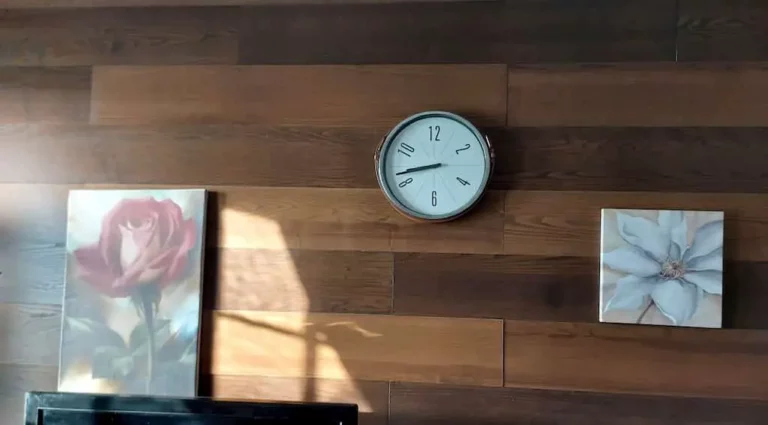Do Awnings Have To Be Fully Extended?

Awnings are a fantastic addition to any property. Whether you’re adding an awning to your cafe or yard, you must know how to use it properly and care for it. You’ll also want to know whether an awning must be closed or fully extended.
Most awnings don’t have to be fully extended, although most ceilings have a minimum extension point that must be developed to remain strong. However, some automatic awnings or electrical awnings will either open fully or shut when in use.
Continue reading to learn more in detail about fully extending and partially extending your awning. Let’s also explore how high your roof can go and how much space you need to allocate for it. By the end of reading this piece, you’ll have better insight into awning care and maintenance.
When Should You Not Extend Your Awning?
Depending on the make and model, openings can be left fully extended or partially extended. Leaving the awnings in these positions is safe and secure in most circumstances. However, it’s unwise to leave your awning extended and unsupervised in certain conditions.
You shouldn’t extend your awning when there’s stormy weather or high winds. The awning can catch a gust of wind, similar to how an umbrella catches wind. It will cause structural damage to the awning, resulting in expensive repairs or a replacement.
Snow and heavy rain can also damage awnings. They can also accumulate on top of the awning, adding more weight for the structure to support. Over time, this can lead to a lot of wear and tear, and if too much weight accumulates, your awning may bend or buckle.
However, some awnings have been specifically designed to stay strong and durable, even in snow, rain, or high winds. If this is the case for your awning, it’ll be perfectly safe to use your awning by the manufacturer’s guidelines.
In short, you can use most awnings in all weather conditions, except heavy rain, snow, or strong winds. You also should avoid extending your awning if water is accumulating on top. Water can add weight quickly, so ensure no water build-ups occur when your awning is opened to increase the lifespan of the awning.
If you’re not careful, your awning can get damaged quickly. Repairing your awning or having it replaced can be costly, so it’s best to use your awning as intended. The costs for repairing an awning can be between a couple of hundreds to slightly over a thousand dollars. Of course, the repair cost will depend on the kind of fixes needed for the awning.

Are Retractable Awnings Worth It?
Some awnings are fixed in place with sturdy structural components designed to withstand weather conditions all year round. While other awnings can retract and extend to accommodate for changing weather conditions. So, are retractable awnings worth the extra investment compared to fixed awnings?
Retractable awnings are generally worth it due to their longevity and added convenience. They’re durable and adaptable, as they can easily be opened or closed to adjust to weather conditions, allowing them to last longer without the need for repairs.
You can fit a retractable awning with sensors to detect changes in wind or rain. The awning will then automatically open or close without you having to lift a finger. When equipped with these features, you’ll never have to worry about leaving your awning extended in solid winds again.
Also, retractable awnings can be kept retracted for the cold winter months, allowing sunlight to enter your property and warm it. This added heat will reduce your dependency on energy for heating your home, saving you money on energy costs while also reducing your impact on the environment.
Similarly, you can extend your awning during the summer to prevent direct sunlight from hitting doors and windows. Doing so will keep your home cool during warm weather and significantly reduce your need for air conditioning, a cost-effective bonus of installing a retractable awning.
How Much Space Will an Awning Require?
One of the significant advantages of installing an awning on your property is its compact nature. Awnings can extend and retract to conserve space. Nevertheless, they do still take up some space on your property.
An awning will require between 8 and 12 inches (20.32 and 30.48 cm) of space to be mounted onto the wall. It typically extends between 5 feet (1.5m) and 10 feet (3m) when open. Therefore, you’ll need enough distance away from the wall to fit the awning when fully extended.
Awnings don’t require wall mounting. Therefore, if you don’t have enough space to mount the awning to the wall, you can attach it to the soffits or fascia to support the awning. You should install it at least 10 inches (25.4 cm) clear of any doors or windows for best results.
Awnings come in various shapes and sizes, so it’s not hard to find one that matches your needs and space. Check the dimensions of your desired canopy before purchasing to ensure you have enough space to install it.
How High Can You Install an Awning?
Once you’ve figured out how much space your awning will take up, it’s time to figure out how high up on your wall you’re going to place it. While deciding, you’re probably wondering how high up you can install your awning.
You can install an awning as high as you like, though mounting it too high can reduce function, take up more space, and make maintenance much more challenging. However, there’s a minimum height for awnings, about 90 inches (228.6 m).
If you install an awning higher up, you may require a more significant amount of cover, depending on the angle the sunlight reaches your property. However, you should always install an awning at least 90 inches (228.6 cm) above the ground and a further 10 inches (25.4 cm) if the awning opens over a door or window.
Can You Attach an Awning Directly to a Roof?
If you wish to add an awning to a one-story property, you likely won’t have enough room on the wall to install an awning. The wall may not even reach high enough for an awning to be installed. In this scenario, you may think it’s not a viable option; however, this isn’t the case.
You can attach an awning directly to a roof. Small properties like bungalows can have stylish awnings installed. Similarly, buildings without enough wall space for the brackets of an awning can instead install the canopy directly to the roof without taking up any wall space.
As a result, smaller homes and businesses can take full advantage of adding an extra awning to their property without sacrificing wall space.
Installing an awning directly into the roof of a building can work wonders for a property’s aesthetic. Awnings can also increase the usable space of a small property by providing people with more outdoor space, ideal for entertaining guests and visitors.
Final Thoughts
Awnings are a fantastic addition to any property. They can provide you with some extra room outdoors for entertaining guests at home or events to fit more customers into your business. Depending on the make and model, you can partially or fully extend your awning.
Except for heavy rain, snow, or strong winds, awnings can be left fully extended in all weather. That’s because awnings can collect water or snow and damage the structural components, or strong winds can cause harm to their parts. However, some awnings are designed to withstand bad weather.
Learn more!! see our article What Is An Awning? A Guide To Choose An Awning, Options And Tips for more information





